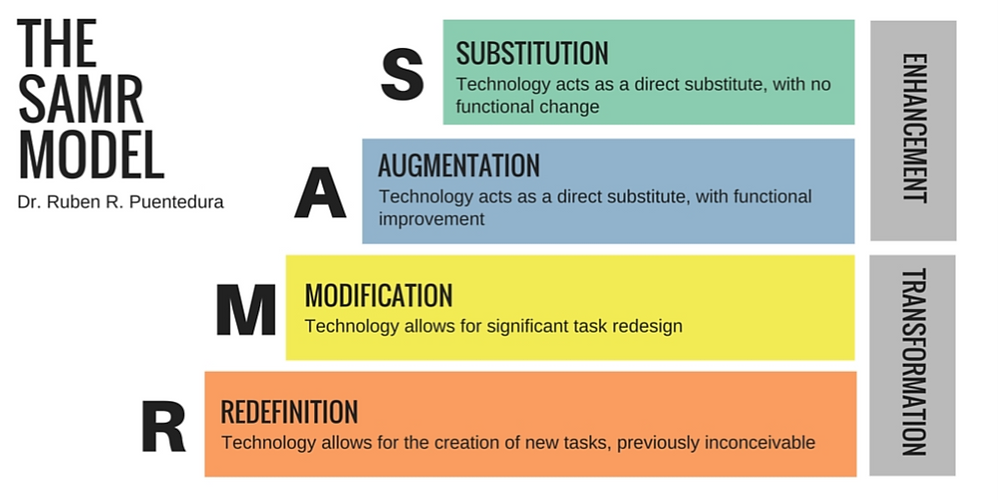In the classroom, the SAMR approach is used to evaluate the effectiveness of multi-media learning and technology. Substitution, augmentation, modification, and redefinition are the four main components of the SAMR model. Substitution and augmentation are considered at the enhancement level, while modification and redefinition are classified at the transformation level.

Technical integration does not appear to be difficult at the enhancement level (substitution and augmentation). This category includes vocabulary processing software and technologies that expose pupils to digital information, such as PDF annotators. These technologies allow for functional enhancements to the learning task, but not yet for a change in the task’s essence.
At the transformation level of the model, modification and redefinition are distinct domains. Here, technology is employed in a more complex way to change the learning task or redefine an existing activity in order to obtain a previously unimagined learning result. Google Docs is a good example: it’s a web-based vocabulary processing application that lets students communicate and cooperate with one another. Time and place are no longer impediments to collaborative work, and technology helps students overcome these obstacles.
SAMR: A Brief Introduction by Dr. Ruben Puentedura, the creator of the SAMR model.
In general, the SAMR model is a useful tool for assessing the influence and role of technology in education. In some ways, the improved class level is really a refinement of present teaching standards and methodologies. Such EDtech implementations are more receptive and easier to integrate into present curricula and teaching approaches. Because the transition is gradual and does not necessitate extensive retraining, technologies are merely expected to improve the learning experience. For another level of transformation, in which EDtech has a greater impact on educational transformation, if not outright replacement. The tasks of teaching must be altered, reconstructed, or reinterpreted. The final results could be drastically different from the initial ones.
Leave a Reply
You must be logged in to post a comment.